Chapter 8 – A Lifetime of Fishing
My first recollection of fishing was with a cane pole when I was very young. The Balsam Store sold fishing outfits that included a twelve-foot bamboo pole, 25 yards of six-pound monofilament line along with a red and white bobber and three #8 hooks. After digging for some garden worms, we would hike down to the shores of Snaptail Lake and fish along its banks or from one of the docks at my grandpa’s resort. There were tons of little sunnies within our reach and for a day or two we would happily pull fish after fish from those fertile waters. It didn’t take long, however, to jam our pole into the ground on our walk to the lake or catch the line in the brush along the shoreline and break the terminal three or four feet off the end. These “outfits” must have been cheap because our family didn’t have much money and we oldest three kids would each get one for the opening of fishing season most every spring!
As we moved ahead a few years, my dad would take my brother and me around our end of the lake in one of my grandpa’s homemade wooden boats. We had no motors, so he would row us for hours, circling the two shallow reefs nearest our “house” - one of the small cabins from the resort.
We had two “real” fishing rigs in the family. Both were level-wind Pfleuger reels, half filled with black, braided line and seated on octagon shaped steel rods. Their claim to fame was that you spent at least half an hour untangling each backlash after a cast or two.
To reduce this down time (that prevented my dad from being able to row), we would troll with red and white daredevles – my brother on one side and me on the other. We would catch dozens of little hammer-handle northern pike and felt good that we contributed to supper that night.
My mom would bring me out to the “big reef” and my job was to catch perch or small sunnies for her to impale with a large circle hook and release beneath a huge red and white float. It was entertainment to concentrate on the bobber and discern the exact moment when a fish was after it.
The plastic sphere would begin moving slowly as a pike started to chase the bait. Suddenly it would dash to one side and then another as the perch was inhaled, finally disappearing beneath the surface.
That was the signal for my mom to set the hook. We caught fewer fish that way, but they tended to be bigger.
One day when I was in junior high, my dad left in the morning and returned in the in the afternoon pulling a seventeen-foot red and white Crestliner runabout with a 40-horse Johnson. I think he had to have mortgaged the house to get it, but with our family now at six siblings and two adults, the old rowboat just didn’t do it anymore. Besides becoming a family outing, it now expanded our horizons to the neighboring lakes to fish. Lower Balsam and Big Balsam. Long Lake, Lawrence Lake, Spider and Crooked.
We even spent time on Red Lake, Cutfoot Sioux and Big Winnie, not many miles to the west of us.
In 1962, when I was about ten, my dad took me up to Lac la Croix. We would put in at Crane Lake and run the Loon River through the infamous “56” rapids to the mechanical portages. Once in, we might stop at Cotten’s Resort (Cotten being a family friend) and stay there, or more often find a place to camp around Snow Bay.
Fishing started to take on different forms. We would auger holes through the ice and fish for crappies on Snaptail and King Lake. We put a “spearhouse” in our bay as soon as the ice was thick enough and tried to ambush pike as they would flash through the huge hole. The spears also came in handy after the first of May when the suckers were running in the Prairie River and its tributaries. Smoked sucker and canned “mock salmon” were a delight. My friend Kelly and I would head to the North Shore to dip and seine, filling five-gallon buckets with smelt. In the spring we would dig some nightcrawlers out of Schjenken’s manure pile and throw out bottom rigs to fish for rainbow trout in Moonshine and Nickel Lakes. Though I never partook, I watched the neighbor Finnish boys snare northerns below the dam on Lower Balsam Creek with wire attached to a cut-off broom stick. More on that later. My uncle Jewell brought me hunting for muskies on the Bigfork River, downstream from Little American Falls north of Effie and Craigville.
Fishing took a back seat during my college years. Four years at Mankato, and two more at the University of Minnesota got in the way of dropping a line in the water. After graduating from the “U,” my penchant for fishing came back with a fervor!
Early in the summer of 1978 I took my first trip to Alaska. A friend up there, Dick Fueling, was a game warden and advised me to bring fishing rods and a tackle box as he “knew where to find the fish.” He was right. I spent four weeks up there catching king salmon with a Mitchell 300 reel, a fiberglass rod and 20# test line in rivers such as the Gulkana, the Klutina and the Kenai. I spent one day on the Klutina catching so many kings I thought my arms were going to fall off!
I moved to the Escape Resort on Bear Island Lake near Ely, late in the summer of 1978. I started slowly by exploring my playground. I was fortunate enough early on to have a circle of friends who loved to fish and knew how and where to do it. I also met my life-long friend Tom Deering that fall. He and I have been on too many adventures to remember.
The water-rich and fish-filled boreal forest of northeast Minnesota and southern Ontario became my new backyard. I don’t think I could name all the lakes I’ve fished in, but over the last 45 years I’ve wet a line in almost every body of water from Lac la Croix to the west and Knife Lake to the east, south to the Echo Trail and east to the Tomahawk Trail. I’ve taken day trips across the border to Argo, Bart Lake, Ranger Bay and North Bay. I’ve explored the Quetico from Beaverhouse to Badwater to Sturgeon to Darky. Robinson Lake to Brent to Conmee to Suzenette, with Kett and Tuck along the way. I’ve fished the length of Agnes Lake and back down through the “S” chain as well as the Man Chain.
I’ve winter camped on Burke Lake and Sunday.
I fished all months of the year.
Open water fishing in late spring, summer and fall. Winter fishing and camping during the time the lakes are covered with ice. There are few days on the calendar in Minnesota where there is no fishing to be had.
During these last four and a half decades, I’ve explored fishing all over the world. In 1980 my dad and I visited relatives in Finland.
We stayed with his first cousin Kalle Hupila who lived on a large lake near Parkano. He was a bachelor who earned the nickname “Kala Kalle” - fish Carl – for his lifetime spent on and near water chasing all kinds of piscatorial delights. He farmed a type of salmon out from his dock in large sunken cages. My dad and I would help feed them twice a day. He would take trips to the Gulf of Finland and the Norwegian coast to harvest many kinds of fish at certain times of the year. One of his favorites was a small fish similar to our smelt. He would seine them, pack them raw into barrels with layers of salt. After an appropriate amount of time fermenting, they were “suitable” for eating.
He insisted we try them, and we did. The taste was terrible!
He also distilled a type of moonshine called “puntikka” in his basement. It was deemed appropriate that after downing some of his fermented fish that you would take a shot of puntikka. I quickly understood why!
He explained that in Finland, you don’t buy a fishing license for the country, but for a particular lake. With that license in hand, you could catch as many fish as you wanted, anytime of the year and by any method you might desire. Hook and line, fish traps (russa) gill nets and spears.
With a twinkle in his eye and the corners of his mouth curling just a bit, he told us the local Sportsman’s Clubs had recently started to look down their noses at using dynamite! The snaring of pike by the local Finnish boys back home now made some sense.
We did fish with him one day. He took us by boat to a long narrow bay just around the corner from his cabin. He strung a gill net across the mouth of the bay and sent my dad and me into the water with boat oars to beat the shoreline. He stayed in the boat near the net. The shallow water was filled with northern pike – what the Finns call “hauki.”
When we startled one it would head for deeper water and become entangled in the net. Kalle would then row to the disturbance, grab the fish from the water, club it over the head and throw it into the bottom of the boat. Fishing in Finland!
Through the 80s, 90s and 2000s, Tom and I would take trips to northern Wisconsin to fly fish for trout and salmon. The Brule and Fish Creek for steelhead and salmon in April, the Brule again in June for brookies and rainbows and the White River around the first of July for browns during the hexagenia hatch. We also brush bust for wild brookies in the boreal forest of Minnesota’s Arrowhead region. The Little Isabella River, Mitawan and Inga in the west as well as the Temperance, Baptism and Manitou in the east.
Some other un-named watersheds shall remain anonymous for the time being.
In 1999 my wife and I, and in 2001 our family did some deepsea fishing off the coast of Mexico near Mazatlan and Acapulco.
We caught tuna, mahi mahi and even one marlin and a swordfish.
I don’t think I could spend many days on the high seas, but for a few, it was exciting! On the other extreme, Tom and I paddled 500 miles of the Albany River in 2006 to Hudson Bay. Over our 27-day trip, we relied heavily on fish to feed us along the way. Supper was walleye and/or northern pike for fourteen of our first 17 days.
For sport we fished brook trout, both along the Albany River and along many of its tributaries – the Misehkow, the Etawamani, the Keezhak and Gorley Creek. That was truly the trip of a lifetime.
As I’ve gotten older, my days on the water have become fewer, trips shorter and destinations less exotic. I still spend time “wetting a line” and continue to enjoy the tug of a fish on the end of that line. I’ve spent outings with my grandkids on local lakes and need to do more of that. Passing on traditions and secret fishing holes must become part of my legacy that I pass on. In the meantime, memories keep me warm and sharing them has become part of my life as I tell stories and write of my escapades. As my friend Tom Wetzel puts it, “We are fortunate to have those memories to fall back on. There are many who do not.” Well said, my friend.
Well said!
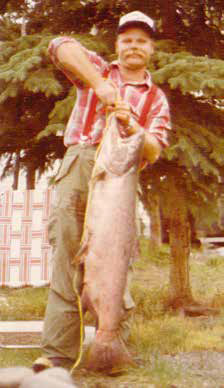
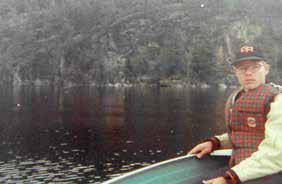
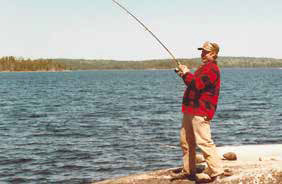
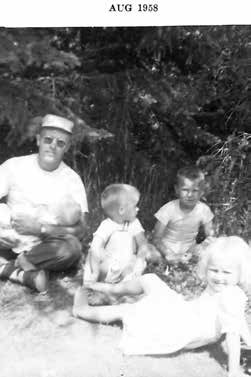
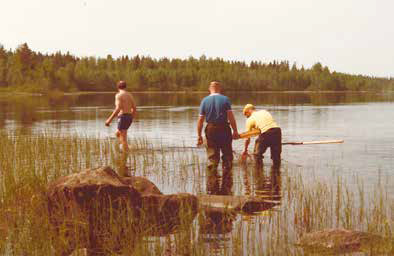
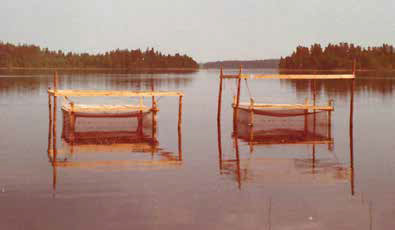
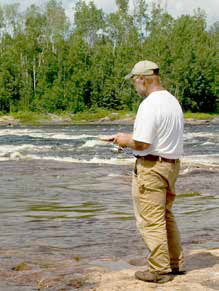
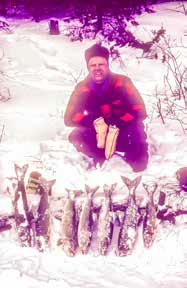
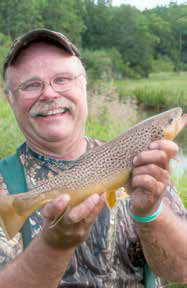
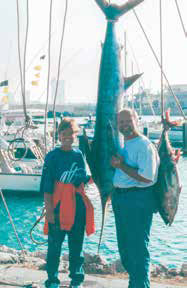
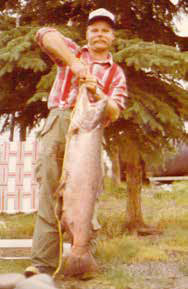
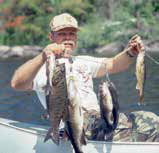
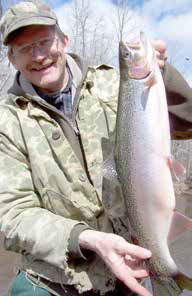
.jpg)









